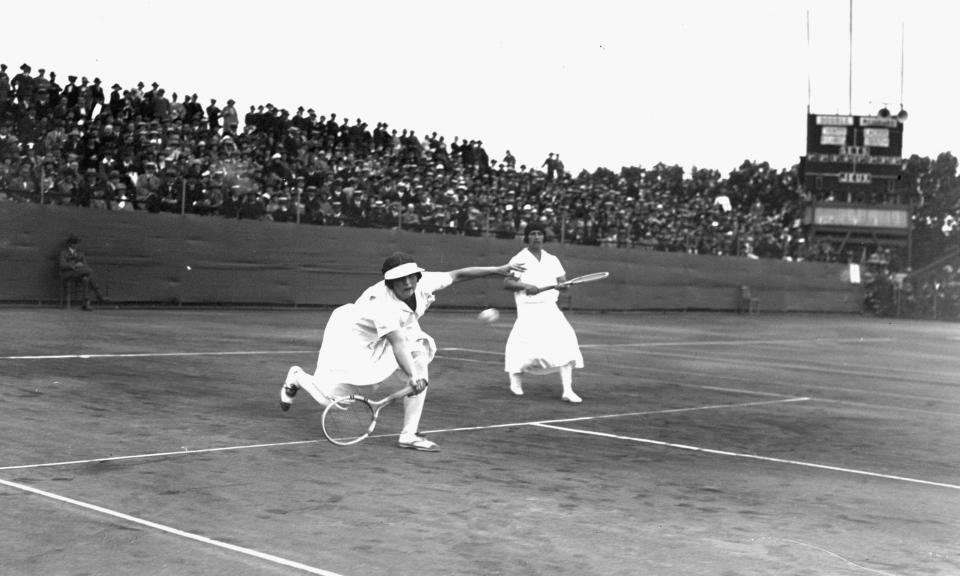The 1924 Paris Olympics saved the Games. Can this year’s event repeat that success?

Paris 1924 was the sixth and last Olympics presided over by Baron de Coubertin, the modern movement’s founder. He had good reason to be pleased with his work. The French government had enthusiastically backed the enterprise, providing a budget of 20m francs and a new stadium. The Olympic rituals – the parade of nations, the rings, the oath, gold, silver and bronze medals – had been established.
Above all, the Games remained the preserve of amateur athletic gentlemen – aristocrats, college kids and military officers – performing what the baron eulogised as “a display of manly virtue”.
But therein lay a problem. At the 1920 Antwerp Games, the public had stayed away in droves from the amateur efforts of the gentlemen athletes, swimmers, gymnasts and the rest. The exclusion of women had led to the creation of a whole new movement, which had staged its own women’s Olympics every year since 1921. The workers’ sports movement, four million strong across the industrialised world, would stage its own inaugural Workers’ Olympics in Frankfurt in 1925, attracting 250,000 participants. And professional sports – baseball, boxing, cycling and football – were creating spectacles and celebrity that no Olympian could match.
The significance of Paris 1924 was that, in all of these domains it offered a sporting riposte to the growing challenges.
Women made up less than 5% of the 3,000 athletes in Paris and were permitted to compete only in swimming, diving and tennis. But for the first time they grabbed some headlines and reshaped perceptions of women and sport.
The American Sybil Bauer, for example, smashed the men’s world record in the 440-yard backstroke prior to the Paris Games, and across America there were calls for her to take on the men at the Olympics. It didn’t happen, but she took the women’s gold medal and broke the Olympic sprint record.
Her compatriot Helen Wills won gold in the tennis singles and mixed doubles and would go on to win 12 Wimbledon titles, becoming the first female athlete to achieve enduring international celebrity.
There were plenty of gentlemen athletes at the Games, but now they had challengers. Harold Osborn, whose gold medals in the high jump and decathlon made him the athlete of the Games, came from a farming family in rural Illinois. American swimmer Johnny Weissmuller, born in Romania, grew up in the slums of Chicago before three gold medals in Paris and a turn in Hollywood as Tarzan took him to Beverly Hills.
The British runners Harold Abrahams and Eric Liddell, who won the 100m and 400m respectively, broke the model of British aristocratic athletics. Abrahams, despite a privileged middle-class background, including the army and Oxbridge, was Jewish and therefore a victim of prejudice. Liddell was from more lowly clerical stock, and his hardline Protestant sabbatarianism made him an odd man out.
Paris also featured the Olympics’ first global celebrities: the Finnish runner Paavo Nurmi and the Uruguayan football team. The former ran six races in seven days, setting new records in most of them, and won five gold medals. He was depicted by the global press as the first superhuman athlete, with Miroir des Sports proclaiming: “Paavo Nurmi goes beyond the limits of humanity.” The Uruguayans dazzled world football with their passing rhythms and balletic balance and were globally acclaimed as not mere athletes but artists, Gazzetta dello Sport reporting on their “musical phrasing” and “stylistic perfection”.
Today the Olympic movement faces challenges greater than in 1924: declining TV ratings, a lack of interest from the world’s youth, a track record of urban and environmental disasters. Today’s athletes are considerably more diverse, no less superhuman, and in the best of their performances, no less accomplished. It remains to be seen whether that will be enough for a second Paris Games to save the Olympics, but I doubt it.
• David Goldblatt is a historian and author of The Games: A Global History of the Olympics

 Yahoo Sport
Yahoo Sport 




































































